Optimization protocol for the extraction of 6-gingerol and 6-shogaol from Zingiber officinale var. rubrum Theilade and improving antioxidant and anticancer activity using response surface methodology
- PMID: 26223685
- PMCID: PMC4520084
- DOI: 10.1186/s12906-015-0718-0
Optimization protocol for the extraction of 6-gingerol and 6-shogaol from Zingiber officinale var. rubrum Theilade and improving antioxidant and anticancer activity using response surface methodology
Abstract
Background: Analysis and extraction of plant matrices are important processes for the development, modernization, and quality control of herbal formulations. Response surface methodology is a collection of statistical and mathematical techniques that are used to optimize the range of variables in various experimental processes to reduce the number of experimental runs, cost , and time, compared to other methods.
Methods: Response surface methodology was applied for optimizing reflux extraction conditions for achieving high 6-gingerol and 6-shogaol contents, and high antioxidant activity in Zingiber officinale var. rubrum Theilade . The two-factor central composite design was employed to determine the effects of two independent variables, namely extraction temperature (X1: 50-80 °C) and time (X2: 2-4 h), on the properties of the extracts. The 6-gingerol and 6-shogaol contents were measured using ultra-performance liquid chromatography. The antioxidant activity of the rhizome extracts was determined by means of the 1,1-diphenyl-2-picrylhydrazyl assay. Anticancer activity of optimized extracts against HeLa cancer cell lines was measured using MTT (3-(4,5-dimethylthiazol-2-yl)-2,5-diphenyltetrazolium bromide) assay.
Results: Increasing the extraction temperature and time induced significant response of the variables. The optimum extraction condition for all responses was at 76.9 °C for 3.4 h. Under the optimum condition, the corresponding predicted response values for 6-gingerol, 6-shogaol, and the antioxidant activity were 2.89 mg/g DW, 1.85 mg/g DW, and 84.3%, respectively. 6-gingerol and 6-shogaol were extracted under optimized condition to check the viability of the models. The values were 2.92 and 1.88 mg/g DW, and 84.0% for 6-gingerol, 6-shogaol, and the antioxidant activity respectively. The experimental values agreed with those predicted, thus indicating suitability of the models employed and the success of RSM in optimizing the extraction condition. With optimizing of reflux extraction anticancer activity of extracts against HeLa cancer cells enhanced about 16.8%. The half inhibition concentration (IC50) value of optimized and unoptimized extract was found at concentration of 20.9 and 38.4 μg/mL respectively. Optimized extract showed more distinct anticancer activities against HeLa cancer cells in a concentration of 40 μg/mL (P < 0.01) without toxicity to normal cells.
Conclusions: The results indicated that the pharmaceutical quality of ginger could be improved significantly by optimizing of extraction process using response surface methodology.
Figures
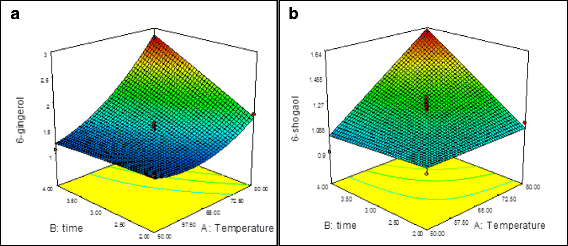
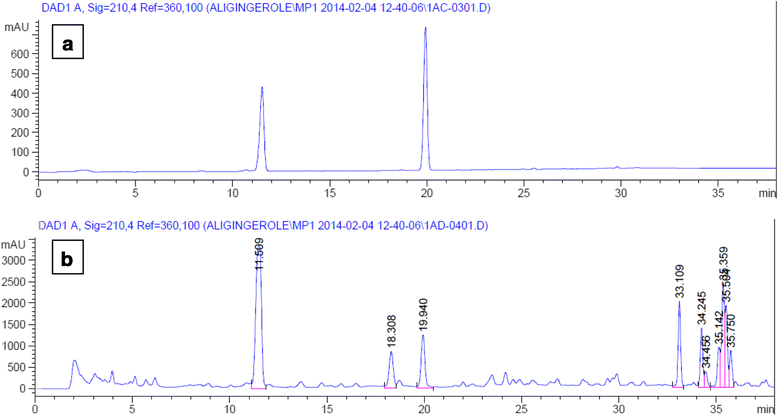
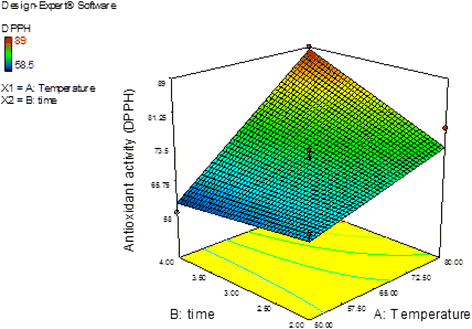
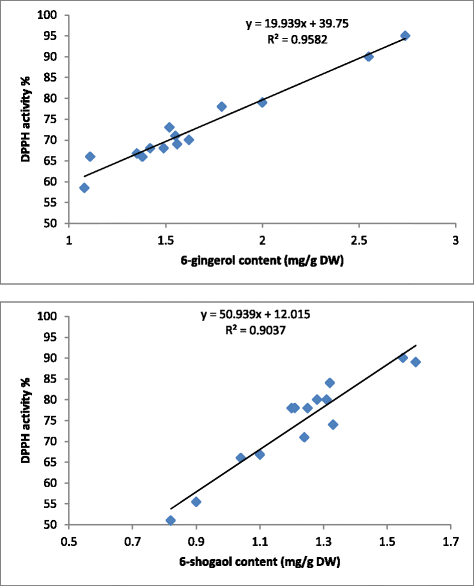
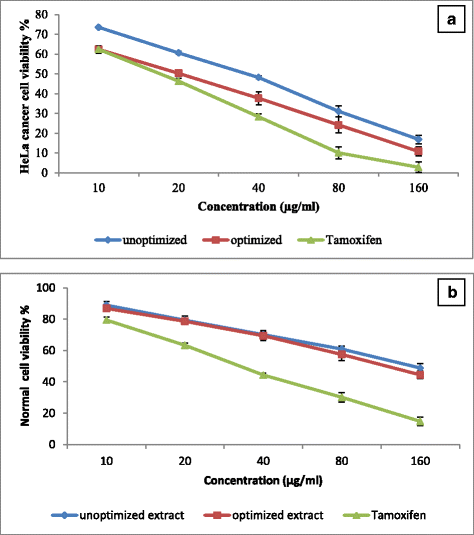
Similar articles
-
Comparative antioxidant and anti-inflammatory effects of [6]-gingerol, [8]-gingerol, [10]-gingerol and [6]-shogaol.J Ethnopharmacol. 2010 Feb 3;127(2):515-20. doi: 10.1016/j.jep.2009.10.004. Epub 2009 Oct 13. J Ethnopharmacol. 2010. PMID: 19833188
-
Cyclooxygenase-2 inhibitors in ginger (Zingiber officinale).Fitoterapia. 2011 Jan;82(1):38-43. doi: 10.1016/j.fitote.2010.09.004. Epub 2010 Sep 15. Fitoterapia. 2011. PMID: 20837112 Free PMC article.
-
Comparing the effects of microwave radiation on 6-gingerol and 6-shogaol from ginger rhizomes (Zingiber officinale Rosc).PLoS One. 2019 Jun 10;14(6):e0214893. doi: 10.1371/journal.pone.0214893. eCollection 2019. PLoS One. 2019. PMID: 31181065 Free PMC article.
-
Biological properties of 6-gingerol: a brief review.Nat Prod Commun. 2014 Jul;9(7):1027-30. Nat Prod Commun. 2014. PMID: 25230520 Review.
-
Gingerol and Its Role in Chronic Diseases.Adv Exp Med Biol. 2016;929:177-207. doi: 10.1007/978-3-319-41342-6_8. Adv Exp Med Biol. 2016. PMID: 27771925 Review.
Cited by
-
Formation of 6-, 8- and 10-Shogaol in Ginger through Application of Different Drying Methods: Altered Antioxidant and Antimicrobial Activity.Molecules. 2018 Jul 5;23(7):1646. doi: 10.3390/molecules23071646. Molecules. 2018. PMID: 29976903 Free PMC article.
-
Optimization of microwave-assisted extraction of zerumbone from Zingiber zerumbet L. rhizome and evaluation of antiproliferative activity of optimized extracts.Chem Cent J. 2017 Jan 5;11:5. doi: 10.1186/s13065-016-0235-3. eCollection 2017. Chem Cent J. 2017. PMID: 28123448 Free PMC article.
-
QbD-Optimized, Phospholipid-Based Elastic Nanovesicles for the Effective Delivery of 6-Gingerol: A Promising Topical Option for Pain-Related Disorders.Int J Mol Sci. 2023 Jun 10;24(12):9983. doi: 10.3390/ijms24129983. Int J Mol Sci. 2023. PMID: 37373129 Free PMC article.
-
Lead Phytochemicals for Anticancer Drug Development.Front Plant Sci. 2016 Nov 8;7:1667. doi: 10.3389/fpls.2016.01667. eCollection 2016. Front Plant Sci. 2016. PMID: 27877185 Free PMC article. Review.
-
Optimized Extraction, Preliminary Characterization, and In Vitro Antioxidant Activity of Polysaccharides from Glycyrrhiza Uralensis Fisch.Med Sci Monit. 2017 Apr 13;23:1783-1791. doi: 10.12659/msm.900471. Med Sci Monit. 2017. PMID: 28404983 Free PMC article.
References
-
- Organization WH. WHO traditional medicine strategy 2002–2005. 2002.
-
- Kundu JK, Surh Y-J. Molecular basis of chemoprevention with dietary phytochemicals: redox-regulated transcription factors as relevant targets. Phytochem Rev. 2009;8(2):333–47. doi: 10.1007/s11101-009-9132-x. - DOI
Publication types
MeSH terms
Substances
LinkOut - more resources
Full Text Sources
Other Literature Sources
Medical

